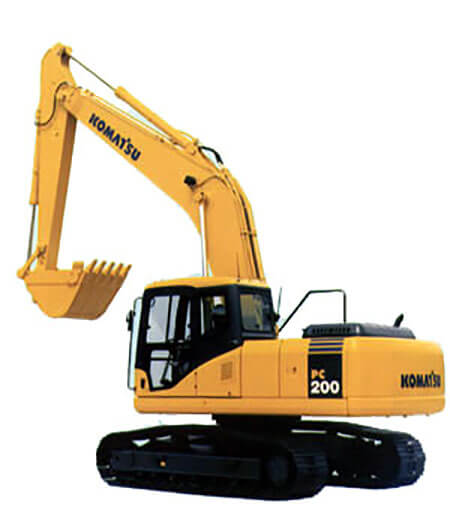2000
The IT revolution had a tremendous influence on the technology of construction equipment as well. The satellite operation management system was developed during the 90's as a method to supervise and manage equipment from a remote distance, and became an industry standard during this era.

This is the new version of PC200 capped with the series name "GALEO" that followed the "Avance" series that had been around since 1988. Its biggest advantage was to have "KOMTRAX" as standard equipment. With GPS, the unit sent out information including the working position, hours run, engine analysis, and hydraulic device condition. This made it possible to monitor machinery remotely preventing trouble, taking proper and prompt actions with breakdowns and keeping each unit in peak condition.
Weight: 19300kg, Bucket capacity: 0.8m3
Hydraulic excavator
Since its first emergence in 1951, it took only 50 years for the hydraulic shovel to establish its primary position on construction sites worldwide. Its size ranges from mini to super size depending on the scale of construction, and during the half century, it kept evolving by achieving a minimum rear-swing radius and adapting styles that would work with characteristics of each site. Mirroring the movement of a human hand, a hydraulic shovel will continue to evolve during the 21st century.